Italy’s landscapes are marked by centuries of human intent, empires built, cathedrals raised, and cities designed with precision. The historical places in Italy reflect the weight of real events, not museum polish. These are the forums where power shifted, the churches that sheltered generations, and the towns that outlasted sieges, plagues, and dynasties. Walking through them is not just sightseeing. It is stepping into centuries of cultural glory, architectural genius, and living history. Whether in the heart of Rome or the quiet corners of Matera, each place carries an identity that shaped not just Italy but the world.
Must-Visit Historical Places In Italy
These historical places in Italy are not background scenery. They shaped law, art, and belief, and still stand, not as ruins, but as foundations that continue to define the nation.
1. Colosseum, Rome
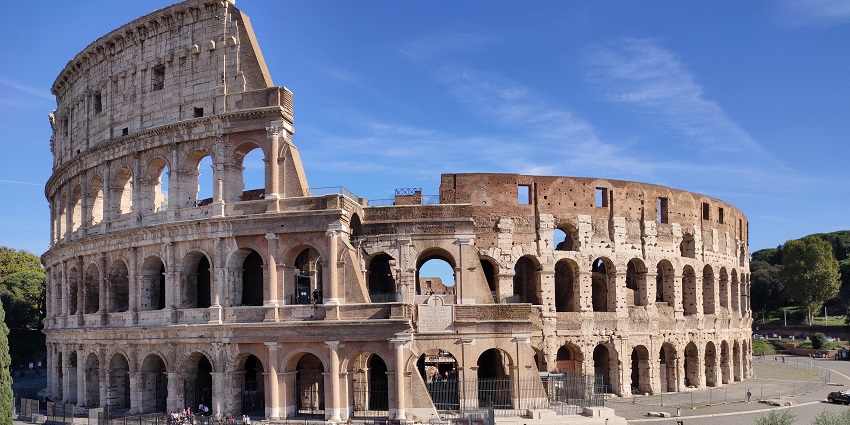
Photo: MCMX1 / Wikimedia Commons
Under Emperor Vespasian, construction began in 72 CE, right on top of Nero’s private lake. That alone was a message that Rome had reclaimed the city from excess. It opened under Titus with a hundred days of violent games. Beneath the arena floor, a maze of corridors held animals, fighters, and prisoners waiting in the dark. Walk through them today, and the scale feels overwhelming. Few historical places in Italy confront you like this grand, brutal, and still very much alive in the centre of the capital.
How To Reach: Metro Line B, Colosseum Station
Cost: €16 / ₹1550
Timings: 9 AM – 7 PM
Nearby Attractions: Roman Forum, Palatine Hill, Arch of Constantine
2. Pompeii Archaeological Park, Naples

Photo: C1 Superstar / Pexels / Image For Representation Only
Pompeii was a busy Roman town with stone streets, two-storey houses, workshops, and bathhouses. In 79 CE, Mount Vesuvius erupted and covered the entire area in thick layers of ash and rock. The city wasn’t burned; it was sealed. What this preserved was not just buildings but the rhythm of daily life. From preserved frescoes on dining room walls to tools left behind in kitchens, the details remain in place. The plaster casts of victims show people frozen in their final moments, making Pompeii one of the most direct and detailed records of ancient Roman society.
How To Reach: Circumvesuviana train to Pompeii Scavi Station
Cost: €18 / ₹1800
Timings: 9 AM – 7 PM
Nearby Attractions: Mount Vesuvius, Herculaneum, Amphitheatre
3. Florence Cathedral
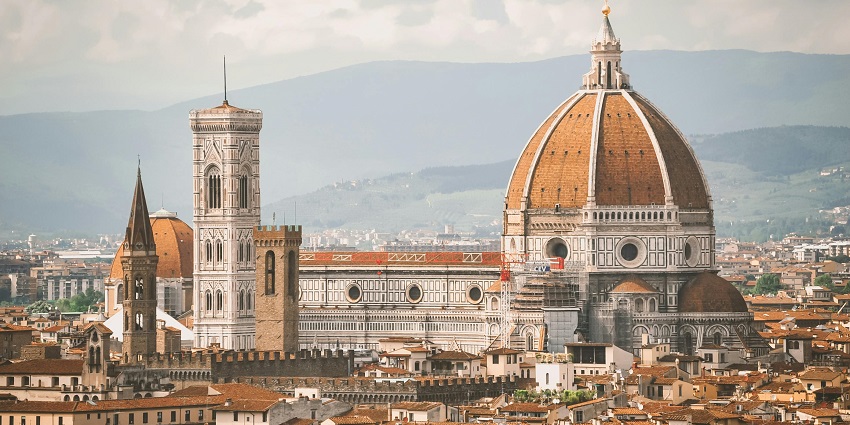
The cathedral in Florence, also known as Duomo di Firenze, was planned in the late 13th century, at a time when the city was asserting itself through art and architecture. It took more than 140 years to complete. Brunelleschi’s dome, finished in 1436, was built using techniques no one had attempted before. He constructed it without wooden scaffolding, layering bricks in a herringbone pattern to keep the structure stable as it rose. The outside of the cathedral was later covered in coloured marble, carefully arranged to match the older Gothic design.
How To Reach: 10-minute walk from Santa Maria Novella Station
Cost: €15–30 / ₹1500-3000
Timings: 10:15 AM – 4:45 PM
Nearby Attractions: Uffizi Gallery, Piazza della Signoria, Baptistery
4. Leaning Tower Of Pisa
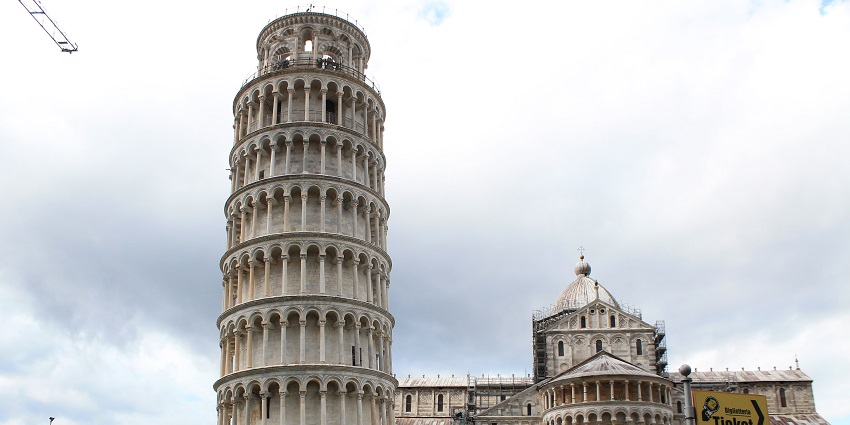
Photo: John Samuel / Wikimedia Commons
The Leaning Tower was never meant to tilt. Construction began in 1173, but the soft ground on one side caused it to shift before the third storey was even finished. Construction began in 1173, and by the time the third level was reached, the south side had already started sinking into the ground. The soil was too soft to support the weight, and it shifted unevenly. It was originally designed as the bell tower for the Pisa Cathedral, part of a larger complex known as the Piazza dei Miracoli. Among all historical places in Italy, this tower remains one of the most unusual and recognisable structures ever built.
How To Reach: Walk or bus from Pisa Centrale Station
Cost: €20 / ₹2000
Timings: 9 AM – 8 PM
Nearby Attractions: Piazza dei Miracoli, Camposanto, Baptistery
5. Doge’s Palace, Venice
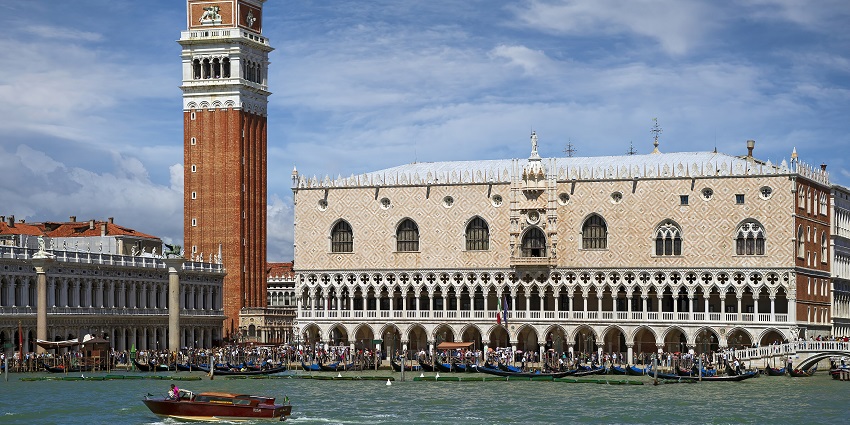
Photo: Didier Descouens / Wikimedia Commons
For centuries, this building served as the political and legal centre of the Venetian Republic. It held the doge’s private rooms, government halls, courtrooms, and even prison cells all under one roof. Construction started in the 1300s. The façade was built using pale Istrian stone and pink marble from Verona, arranged in repeating geometric designs that made it stand out even among the buildings lining the waterfront. The palace faces the water directly and forms the edge of Piazza San Marco. One enclosed passage, known as the Bridge of Sighs, connects it to the prison wing. After sentencing, prisoners crossed this bridge to their cells.
How To Reach: Vaporetto to San Zaccaria stop
Cost: €30 / ₹3000
Timings: 9 AM – 7 PM
Nearby Attractions: St. Mark’s Basilica, Rialto Bridge, Grand Canal
6. Saint Mark’s Basilica, Venice
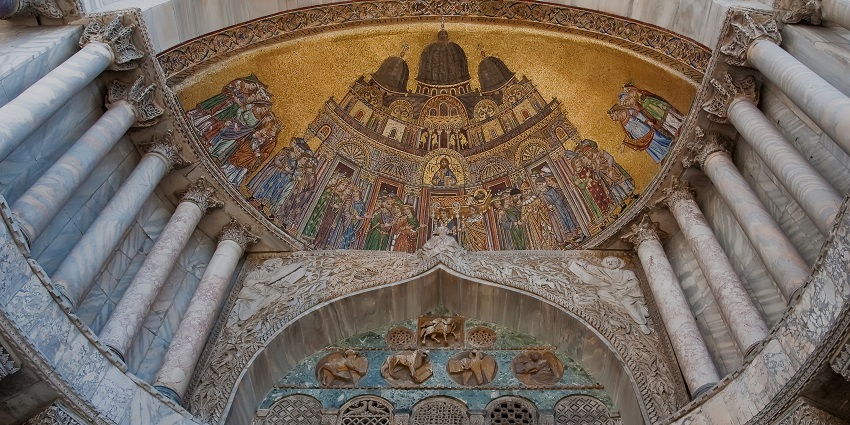
Photo: Roman Bonnefoy / Wikimedia Commons
The basilica was built in the 9th century to house the remains of Saint Mark, which Venetian merchants brought back from Alexandria. Over the following centuries, it became the most important religious building in Venice and the centre of state ceremonies. The design was influenced by Byzantine architecture, with domes shaped like the East and walls covered in detailed mosaics made from coloured glass and gold, completed between the 11th and 13th centuries. The floor is laid with marble tiles in geometric designs. Behind the main altar stands the Pala d’Oro, a large gold panel decorated with enamel work and set with hundreds of gemstones.
How To Reach: Walk from San Zaccaria or Vallaresso Vaporetto stop
Cost: €5 / ₹500 for museum & €7 / ₹700 for Pala d’Oro
Timings: 9:30 AM – 5:15 PM
Nearby Attractions: Doge’s Palace, St. Mark’s Square, Campanile
7. Valley of The Temples, Agrigento
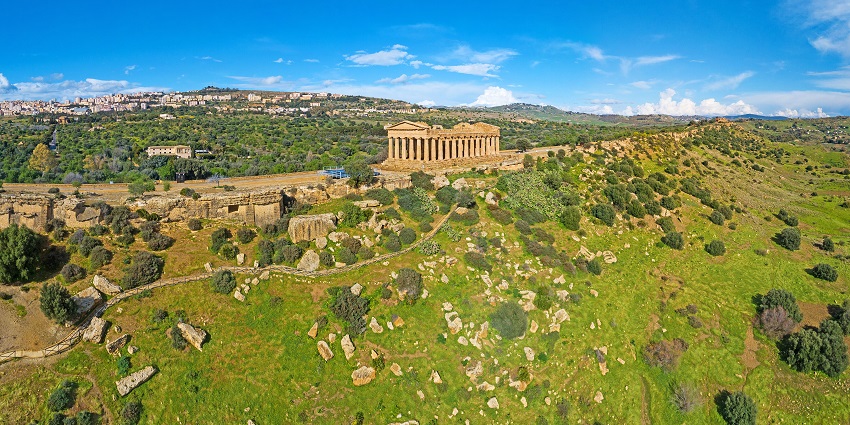
Photo: Ludvig14 / Wikimedia Commons
The Valley of the Temples stretches across a ridge in southern Sicily and contains one of the best-preserved groups of ancient Greek temples anywhere in the world. The site was part of the ancient city of Akragas, founded in the 6th century BCE. The Temple of Concordia is the most intact, with its columns and pediments still in place after more than two thousand years. Nearby are the remains of the Temple of Hera, the Temple of Heracles, and several others, all built using golden limestone that catches the light at sunset. This was not just a religious centre, it was part of a wealthy, powerful city that traded widely across the Mediterranean.
How To Reach: Train or bus to Agrigento, then local transport
Cost: €12 / ₹1200
Timings: 8:30 AM – 8 PM
Nearby Attractions: Kolymbethra Garden, Archaeological Museum, Scala dei Turchi
8. Palatine Chapel, Palermo
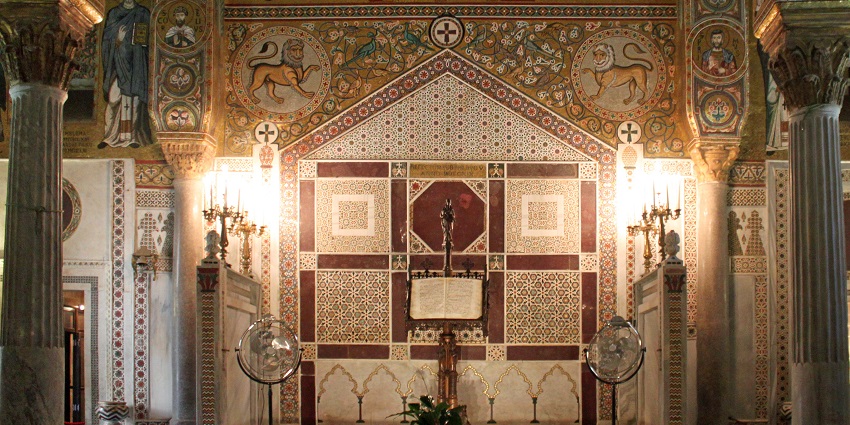
Photo: Liilia Moroz / Wikimedia Commons
The Palatine Chapel was built inside the Royal Palace of Palermo in the 12th century under King Roger II, the first Norman ruler of Sicily. It was meant to reflect the cultural mix that defined his court. Latin, Greek, and Arab influences are all present in its design. The ceiling is made of carved wood in a muqarnas pattern, a form of Islamic decoration not seen elsewhere in European churches. The walls are covered in mosaics made by Byzantine craftsmen, showing scenes from both the Old and New Testaments.
How To Reach: Bus from Palermo Centrale to Piazza Indipendenza
Cost: €15 / ₹1500
Timings: 8:30 AM – 4:30 PM (closed on Sundays)
Nearby Attractions: Palermo Cathedral, Quattro Canti, Teatro Massimo
9. Duomo Di Milano, Milan
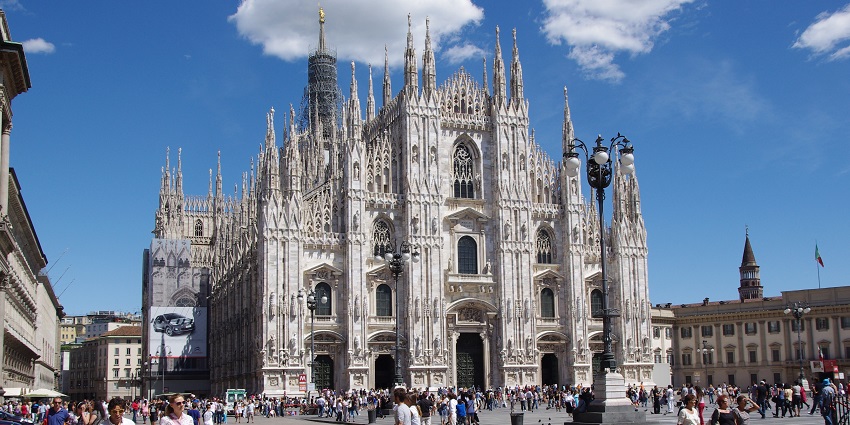
Photo: Jakub Hałun / Wikimedia Commons
It is the largest church in Italy and one of the most complex Gothic buildings in Europe, with over 130 spires and more than 3,000 statues covering its exterior. The façade was completed in the 19th century under Napoleon. The inside is vast, with tall stone columns, stained glass windows that rise high above the nave, and a crypt that holds the remains of Saint Charles Borromeo. Visitors can climb or take a lift to the rooftop, where the view stretches across the city and the Alps on a clear day.
How To Reach: Metro Line 1 or 3 to Duomo Station
Cost: €15–20 / ₹1500-2000
Timings: 8 AM – 7 PM
Nearby Attractions: Galleria Vittorio Emanuele II, La Scala, Sforzesco Castle
10. Sassi Di Matera, Basilicata
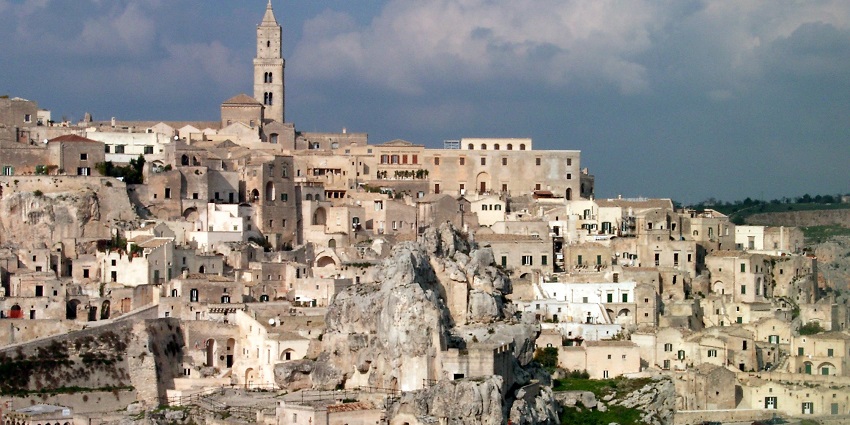
Photo: Bönisch / Wikimedia Commons
The Sassi are a network of stone dwellings, churches, and cisterns carved directly into the rock face of a ravine in southern Italy. People have lived in this part of Matera for over 9,000 years, making it one of the oldest continuously inhabited settlements in the world. The homes were cut into the soft limestone, with each level built over the roof of the one below it. Of all the historical places in Italy, this is one of the few where you can walk through a city that grew straight out of the stone.
How To Reach: Train from Bari to Matera Centrale, 15-minute walk
Cost: €5–€10 / ₹500-1000
Nearby Attractions: Matera Cathedral, Casa Grotta, Murgia Viewpoint
11. Roman Theatre And Arena, Verona
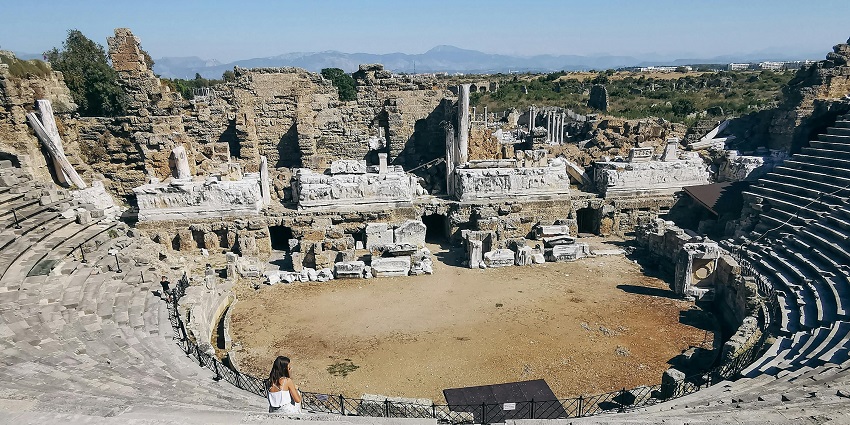
Photo: Mehmet Turgut Kirkgoz / Pexels / Image For Representation Only
The Arena of Verona was built in the 1st century CE, which held up to 30,000 spectators and was used for gladiator contests, animal shows, and other public events. The walls were made from pink limestone quarried nearby. Today, it still functions as an open-air theatre and is best known for hosting opera each summer. On the opposite side of the city, just above the Adige River, stands the Roman Theatre. Both sites are part of Verona’s daily life and are not fenced off from the city around them.
How To Reach: Walk or bus from Verona Porta Nuova Station
Cost: €10 / ₹1000 for Arena & €6 / ₹600 for theatre & museum
Timings: 8:30 AM – 7:30 PM
Nearby Attractions: Juliet’s House, Piazza delle Erbe, Castelvecchio
12. Castel Del Monte, Andria
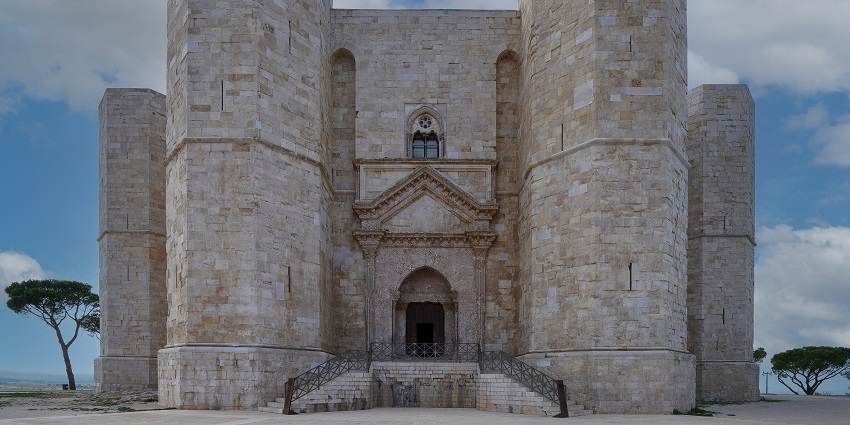
Photo: ParisTaras / Wikimedia Commons
Castel del Monte was commissioned by Emperor Frederick II in the 13th century and built on a hill in the Apulian countryside. Its design is precise with an octagonal structure and eight towers, also octagonal, placed at each corner. The design reflects Frederick’s interest in mathematics, astronomy, and classical philosophy, with the layout following a strict geometric plan, and many researchers believe the structure was meant to represent harmony and order rather than power or control. The inside contains two floors, each built around a central courtyard, with vaulted ceilings and narrow windows that allow light to fall in specific ways.
How To Reach: Train to Andria from Bari; taxi or bus to the castle
Cost: €7 / ₹700
Timings: 9 AM – 7 PM
Nearby Attractions: Alta Murgia National Park, Trani Cathedral, Frederick’s Trail
Historical places in Italy naturally sit within the present. Whether it is a chapel or a Roman road, these places remain part of local life. From the carved stone of Matera to the marble peaks of Milan’s cathedral, each site reveals how time has shaped, layered, and preserved meaning. Travelling through them is not about looking back. It’s about recognising what remains and why it still matters. Plan your journey with TripXL today.
Cover Photo: Supakakul Sanguansuk / Pexels


 WhatsApp
WhatsApp
 Twitter
Twitter









